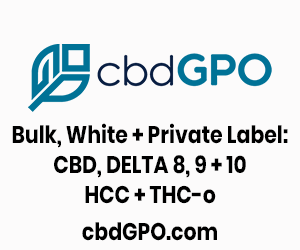Consumers don’t understand CBD but use it anyway
Marijuana Industry News July 23, 2019 MJ Shareholders 0

Imagine shopping your local pharmacy. You stride into Walgreens and head for the OTC aisle in search of a sleep aid. Presto, you pluck two boxes off the shelf. Glancing at the packaging, you realize none of the fine print makes any sense. No matter. Trusting your gut, you drop fifty bucks on a vial of liquid that looks promising. Getting home, you try to puzzle out how much to take before going to bed. A few drops at least. Perhaps the dropper provides a clue? Alas, no. So you wing it. Maybe you get a good night’s sleep, maybe you don’t. If not, you repeat the same process the following evening, only you up the dosage. Rinse and repeat.
Is this an absurd scenario? Yes. Is it a fair analogy to the mindset of today’s CBD consumer? No, but the above isn’t wildly off. How do we know? Simply put, we asked current CBD consumers* a range of questions about product efficacy, labeling, and dosage. The numbers were, if not outright eye-opening, surprising in several ways. The following data appear in the April 2019 whitepaper, The CBD Consumer Experience.
Of current CBD consumers, fewer than one third understand how much CBD to take. Surprisingly, this issue also holds true across the board among consumers. The one factor you might guess would sway that number – past experience with cannabis – makes no difference. (Neither does age or location – in short, CBD users everwhere can only guess at the most appropriate dosage.) Given the strict limits on research and testing to date, it shouldn’t come as much surprise that users are left to guess-and-check on their own.

The consumer mindset regarding the labels and packaging for CBD products is skeptical, to say the least. In most cases, certainly for all but the bad actors, brands attempt to convey accurate and detailed product information within the limits of on-pack real estate. Not only are CBD package sizes relatively small by retail standards, available space for communicating to the conumser is constrained by the label information required by challenging standards.
Viewed in context, this data point is consistent with the prior finding: if consumers can’t rely on their intepretation of product labels, it follows that distinguishing between “good” and “bad” CBD products would be challenging. As we’ve covered in this space previously, the FDA’s direction will likely impact every aspect of the CBD category including what product claims can and can’t be messaged to consumers.
Many CBD brands have not had adequate time and visibility to create consumer trust. Nor are consumers, particularly the influx of new users, familiar with CBD brands from other product categories. Further, until quite recently, consumers were not encountering CBD products in familiar retail environs. Lacking such signals puts consumers in a tough position. This ties into a topic we have covered previously in this space, namely, why CBD presents such as an opportunity to mainstream retail.
But while we track what is happening at drug stores and convenience stores across the country, and eye entrants from our neighbors to the north, the CBD “industry” (if that’s the right word) needs to look inward as well. Marketing investments are being made through increasingly visible mass-market channels and platforms. Companies – like cbdMD, via a new partnership with the pro basketball league BIG3 – are successfully getting brands out there. But the industry must also navigate a path to the consumer with an educational message to address the gaps in consumer perception such as those above. And if not overtly educational, as many are understandably leery about where the guardrails will move to, then attention should be paid to facilitating and encouraging means for consumers to exchange meaningful information and informed opinions.
* The study consists of 1500 US adults across adult use and medical states (including states only allowing for CBD), age 21+, who have used a product containing CBD and zero ( < 0.3%) THC within the most recent three months.
MJ Shareholders
MJShareholders.com is the largest dedicated financial network and leading corporate communications firm serving the legal cannabis industry. Our network aims to connect public marijuana companies with these focused cannabis audiences across the US and Canada that are critical for growth: Short and long term cannabis investors Active funding sources Mainstream media Business leaders Cannabis consumers













No comments so far.
Be first to leave comment below.